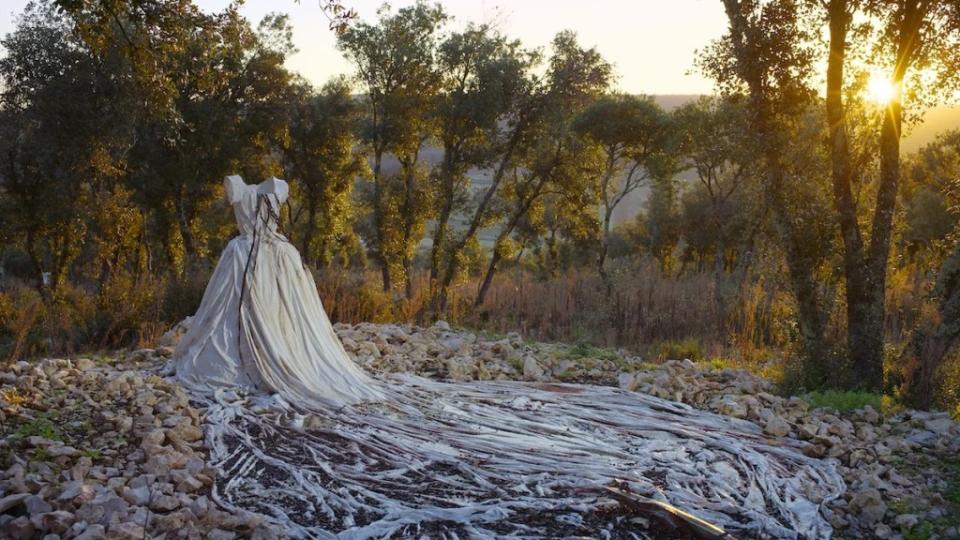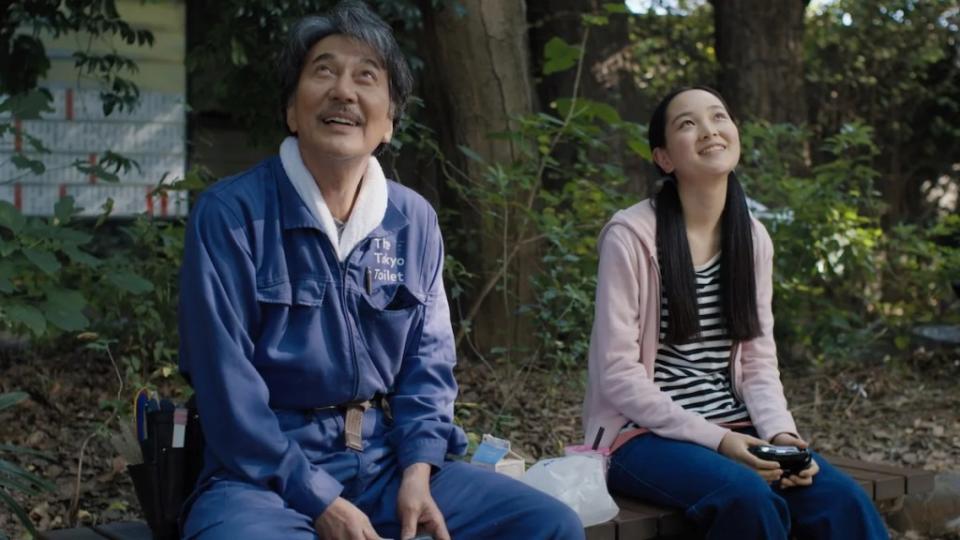Why Wim Wenders Blurred the Lines Between Reality and Fiction in ‘Anselm’ and ‘Perfect Days’
German director Wim Wenders has been making poetic and provocative movies for more than 50 years, ever since he came out of the New German Cinema of the early 1970s. He hit his stride in the ’80s with the haunting “Paris, Texas,” which won the Palme d’Or at the 1984 Cannes Film Festival, and the luminous fantasy “Wings of Desire,” the first time he represented Germany in the Oscars international race.
Since then, Wenders’ career has shown a restless spirit, mixing indefinable narrative films like “Until the End of the World,” “The End of Violence” and “The Million Dollar Hotel” with Oscar-nominated documentaries like “Buena Vista Social Club,” “Pina” and “The Salt of the Earth.” In 2023, he had one of his most productive and intriguing years ever, returning to Cannes to premiere both “Anselm,” a bold 3-D documentary about German artist Anselm Kiefer, and “Perfect Days,” a gentle Japanese-language reverie in which Kôji Yakusho plays an elderly man in Tokyo who happily makes his living cleaning 17 toilets that were designed by notable architects as part of the real-life Tokyo Toilet Project.
“Perfect Days” made the Oscar shortlist in the Best International Feature Film category while “Anselm” didn’t land in the final 15 for Best Documentary Feature, but both are fascinating, lyrical and well worth seeking out.
Your two films this year are dramatically different. Do you see any common artistic impulses that tie them together?
Not really. One was long thought-about. “Anselm” had 30 years of talking about it with Anselm Kiefer, who became a friend in 1991. We wanted to make a movie, but it took us 30 years until we realized it was time and we had to do it now. And then it was a process that took almost three years. We shot seven times in seven installments and I edited for more than two-and-a-half years. It was a very long and painstaking process of putting it together, almost like a puzzle.
And the other film happened in no time, with no preparation and 16 days of shooting. It was a whirlwind. I had the same cameraman on both movies, Franz Lustig, but they were so different. For “Perfect Days,” Franz was shooting everything on his shoulder. We were never on a tripod, never on tracks, never on a dolly or gimbal. Everything was handheld and we were very fast. We shot it like a documentary. And the documentary film (laughs), we always had the camera on tracks, and it was shot like a fictional film.
So you and Anselm started talking about a film a long time ago?
Yes. In ’91. We spent every night together for more than two weeks, because he was assembling his first huge show in Germany in Berlin. Every night he went to the same restaurant, and that happened to be my canteen. I was living next door and editing “Until the End of the World.” He came in the first time and realized the only table was where I was sitting alone. He sat next to me and we started talking, and we were the last people to leave the restaurant. And he said, “Let’s meet again tomorrow.”
He came the next day, and we spoke every night for two weeks. He realized I had always wanted to be a painter, and he told me that he really was dreaming of making a movie. So we felt we were made for each other to work together one day and promised to do that.
But he left and went to France, and I went to America soon afterwards. And I’m happy now because I don’t know what I would’ve done 30 years ago. I hadn’t made any documentaries yet. I think it was good that I got some experience. “Pina” and “Salt of the Earth” prepared me for this one.

When did it become clear that you wanted to do it in 3-D?
That was pretty much from the beginning, really. You see so much more in 3-D. Your mind goes into overdrive and you see everything quadrupled. There’s so much more information than a flat screen can ever expose. When you look at Anselm’s work in a catalog, even if it’s a good book, it’s not comparable. If you stand in front of his work, it’s a whole different story. You need to be there. And only 3-D allows you to feel you are there.
Was “Perfect Days” done while you were still in the process of making “Anselm?“
Not quite. We shot it after I locked picture cut on “Anselm,” while it was in post-production. I had been to Tokyo one week in May in 2022 to check out these places. There was an open invitation to look at these toilets, because they knew I was interested in architecture. I knew some of the architects that built these toilets, and the idea was to make short subjects on the architects and their little buildings. These people built stadiums and 100-floor high rises, and now they built a toilet. But after I saw these amazing toilets, I didn’t feel like I wanted to make documentaries. I felt these places were very special, but they would be lost in a documentary. And I explained to the Japanese partners that fictional storytelling would be so much better.
This was at the same time that the people of Tokyo came out of the longest lockdown ever. Tokyo was basically locked for two years. And when I came that week in May, people were taking possession of their city again. They were doing it in such a beautiful, civilized way that I just loved it. They had parties in the parks and they enjoyed their city again.

My city of Berlin was destroyed after lockdown. People lost all manners and the parks were garbage heaps and the streets were impassable because the sense of the common good was a big victim of the pandemic. I think in other places of the world as well, there was a loss of that idea of the common good in a big way. But not in Tokyo. I felt there’s such a big story to be told in Japan at this moment after the pandemic. And this was going to be my first post-pandemic film. I told them, “I can come back in the fall for two or three weeks and we can do it.” And that’s how we did it.
How did you come up with this character at the center of it, a very quiet and dignified toilet cleaner?
We needed a good man to carry the idea of the common good. And he became the utopia of a man, at least my own post-pandemic utopia of how to live together and be content with what you have. He was somebody who had little but was happy with it. He doesn’t buy 10 books, he buys one book. And when he’s finished it, he buys another one, but not before. He’s happy with his old cassettes, he doesn’t need the same music again on digital or on CDs or whatever.
I loved the idea of somebody who was happy with what he had. It was a little bit of a dream that the people of Tokyo made me dream when I saw them in May. And it’s a little dream, maybe, that the Japan in my mind made me dream. The Japan in my mind is born out of the movies of Ozu. And in a way I thought, let’s make a film like Ozu might have done it, but 60 years after his death.
Do you see your career being more or less divided the way it has been lately between documentaries and narrative films?
Yes and no. The strange thing is that I do my fiction sometimes as if it was documentaries. And my documentaries, I do them as if they were fiction. They really live on each other and complement each other. And actually, I think the division is very artificial. I think the real is something very beautiful in fiction, and the fictional is very beautiful in the real.
This story first appeared in the Awards Preview issue of TheWrap’s awards magazine. Read more from the issue here.

The post Why Wim Wenders Blurred the Lines Between Reality and Fiction in ‘Anselm’ and ‘Perfect Days’ appeared first on TheWrap.


